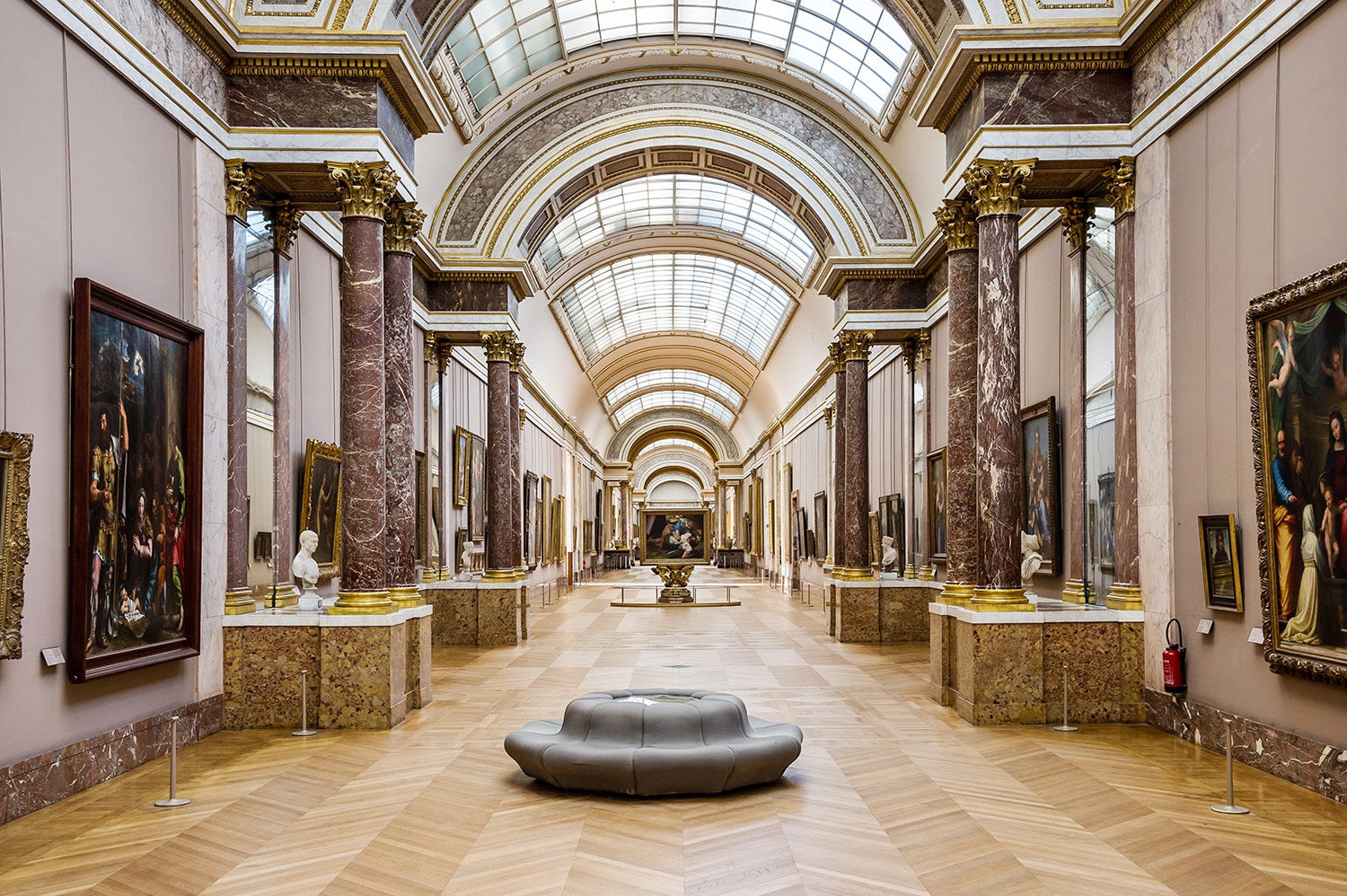 Courtesy of Musée du Louvre
Courtesy of Musée du Louvre
While the Louvre contains art from many nations, it also boasts a uniquely large collection of Italian art from the Renaissance period. This copious assemblage of Italian works begs the question, why is there so much Italian art in the Louvre and how did it get there? Though that question could require a book unto itself, below are a handful of reasons why the most visited museum in the world contains so much Italian art as well as the socio-political and economic factors that led to the museum’s unparalleled collection.
1. The Legacy of the Italian Renaissance
 “Judith beheading Holofernes,” Caravaggio, (approximately 1602), courtesy of the Galleria Nazionale d’Arte Antica
“Judith beheading Holofernes,” Caravaggio, (approximately 1602), courtesy of the Galleria Nazionale d’Arte Antica
During the Italian Renaissance which ranged from the early 14th century to the 16th century before it was eclipsed by the French Renaissance, various new painting techniques, philosophies of art, and iconic artists such as Leonardo da Vinci, Michelangelo, Titian, Carravaggio, and Raphael revolutionized the art world with their mastery of perspective, anatomy, and composition, all of which left an indelible impact on art history.
2. The Medici Heritage
 “Giuliano de’Medici,” (1450) Sandro Botticelli, courtesy of the National Gallery
“Giuliano de’Medici,” (1450) Sandro Botticelli, courtesy of the National Gallery
Central to understanding the flourishing and proliferation of this art and these artists was the immense influence of the patronage of the Medici family in Florence who consisted of a family of political and economic leaders whose scope of influence extended across Italy and later, France. The Medici played an absolutely pivotal role in fostering artistic talent and funding commissions from these up-and-coming artists, thereby cementing their names in history and expanding their renown to an international clientele such as the French monarchy. Throughout early-modern and modern history, France and Italy have maintained close-cultural ties engineering a vibrant exchange of ideas, art, literature, philosophy, and other cultural items. Their diplomatic amiability bolstered French admiration of the Italian Renaissance thus culminating in the French Renaissance, starting in the 16th century, and the acquisition of many Italian artworks which French artists sought to emulate. The legacy of the impressive innovation, originality, and overall quality of Italian art impressed later French monarchs as well, including Louis XIV who was an avid collector of Italian art.
3. Highlights of Italian Art in the Louvre
 “Wedding Feast at Cana,” (1563) Paolo Veronese, courtesy of Musée du Louvre
“Wedding Feast at Cana,” (1563) Paolo Veronese, courtesy of Musée du Louvre
If you’re planning to visit the Louvre on your next trip to Paris, be sure to check out the diverse array of Italian masterpieces from a plethora of periods, movements, and artists such as the frescoes of Botticeli, Leonardo da Vinci’s “Mona Lisa,” and “The Virgin and Child with Saint Anne,” as well as Michelangelo’s “Dying Slave,” and Veronese’s immaculate scene-stealer, “Wedding Feast at Cana.”
The cornucopia of Italian art in the Louvre is a spectacular testament to the continuous legacy of the Renaissance and the history of diplomatic relations between France and Italy. Through the patronage of the great Medici family and their insistence on prioritizing the arts concomitant with international relations, these masterpieces can still be witnessed in all their glory today at the Louvre.